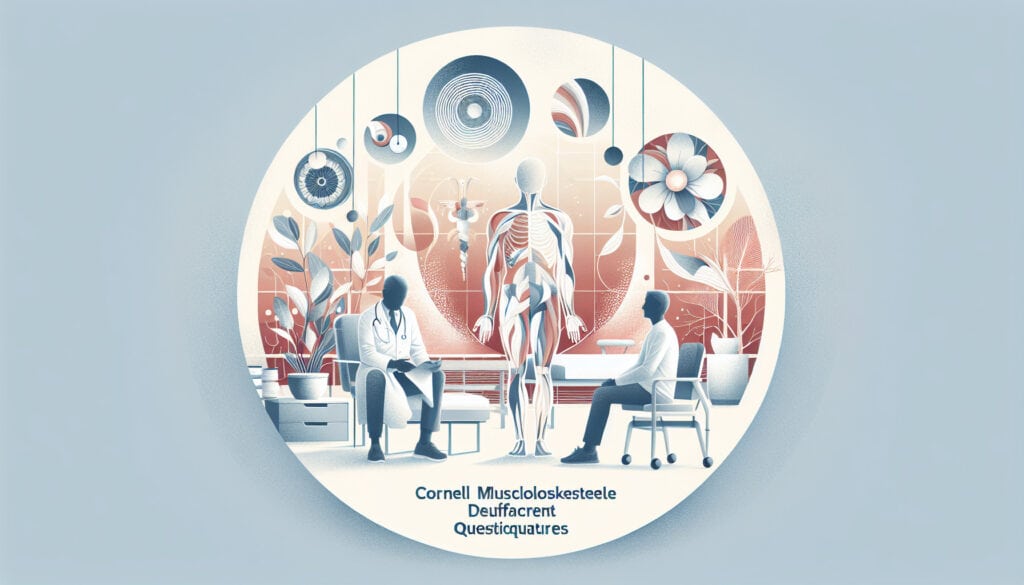A self-administered survey tool used to collect data on the location, frequency, and severity of musculoskeletal discomfort experienced by individuals.
- Methodologies: Customers & Marketing, Ideation, Product Design
Cornell Musculoskeletal Discomfort Questionnaires

Cornell Musculoskeletal Discomfort Questionnaires
- Ergonomics, Health Sciences, Human Factors, Human Factors Engineering (HFE), Process Improvement, Quality Control, Quality Management, Risk Management, Safety
Objective:
How it’s used:
- Employees or study participants are given a diagram of the human body and asked to shade in areas of discomfort and rate the severity and frequency. It is widely used in ergonomic surveillance and research.
Pros
- Easy and inexpensive to administer to large groups, provides standardized data for tracking trends over time, helps in the early identification of potential musculoskeletal issues.
Cons
- Data is subjective and relies on self-reporting, does not identify the cause of the discomfort, and its reliability depends on the participant's memory and interpretation.
Categories:
- Ergonomics, Human Resources, Risk Management
Best for:
- Screening a workforce for the presence of musculoskeletal symptoms to identify high-risk jobs or departments.
The Cornell Musculoskeletal Discomfort Questionnaires (CMDQ) can be applied effectively in various contexts such as manufacturing, healthcare, office environments, and construction, where ergonomic risks are prevalent. During the planning or evaluation phases of workplace design or job task analysis, ergonomists and safety professionals can utilize the CMDQ to assess employee discomfort levels, which aids in pinpointing specific job roles or departments that may require ergonomic intervention. It serves as a preliminary screening tool before implementing in-depth ergonomic assessments or interventions, thus conserving resources while providing actionable data. Ideal participants for this methodology include a cross-section of the workforce, encompassing different roles and levels of experience, to ensure varied ergonomic risk exposure is recorded. As teams continue to collect data over time, companies can track trends in discomfort and proactively address ergonomic improvements leading to enhanced employee well-being and potentially reducing workers’ compensation claims. The ease of administering the CMDQ allows companies to conduct routine surveys, fostering a culture of safety and health that engages employees in their own ergonomic awareness and encourages feedback on workplace conditions. In academia, the CMDQ may be employed in research studies aimed at understanding the ergonomic impacts of various workplace interventions, thereby contributing to a broader knowledge base that informs best practices across industries.
Key steps of this methodology
- Distribute the Cornell Musculoskeletal Discomfort Questionnaire to participants.
- Instruct participants to shade areas on the body diagram where they experience discomfort.
- Ask participants to rate the severity of their discomfort on a predefined scale.
- Request participants to indicate the frequency of discomfort episodes.
- Compile data from all participants for analysis.
- Identify patterns of discomfort across jobs or departments.
- Analyze data to highlight high-risk areas for musculoskeletal issues.
- Compare findings against baseline data or previous assessments.
Pro Tips
- Integrate qualitative follow-up interviews to complement the questionnaire data, allowing participants to elaborate on their discomfort.
- Implement periodic reassessment using the questionnaire to track changes in discomfort patterns and validate ergonomic interventions.
- Use the data aggregated from multiple departments to benchmark against industry standards and identify best practices for ergonomic improvements.
To read and compare several methodologies, we recommend the
> Extensive Methodologies Repository <
together with the 400+ other methodologies.
Your comments on this methodology or additional info are welcome on the comment section below ↓ , so as any engineering-related ideas or links.
Historical Context
1986
(if date is unknown or not relevant, e.g. "fluid mechanics", a rounded estimation of its notable emergence is provided)

Related Posts
METS to Calories Calculator
Meta-Analysis
Message Mapping
Mental Model Diagrams
Maximum Acceptable Pushing and Pulling Forces
Material Requirements Planning (MRP)